Personal vs. Full-Sized Blenders: What’s the Difference?
Dotdash Meredith and Yahoo Inc. may earn commission or revenue on some items through the links below.
We break down each blender’s pros and cons so you can choose the best product for your needs.
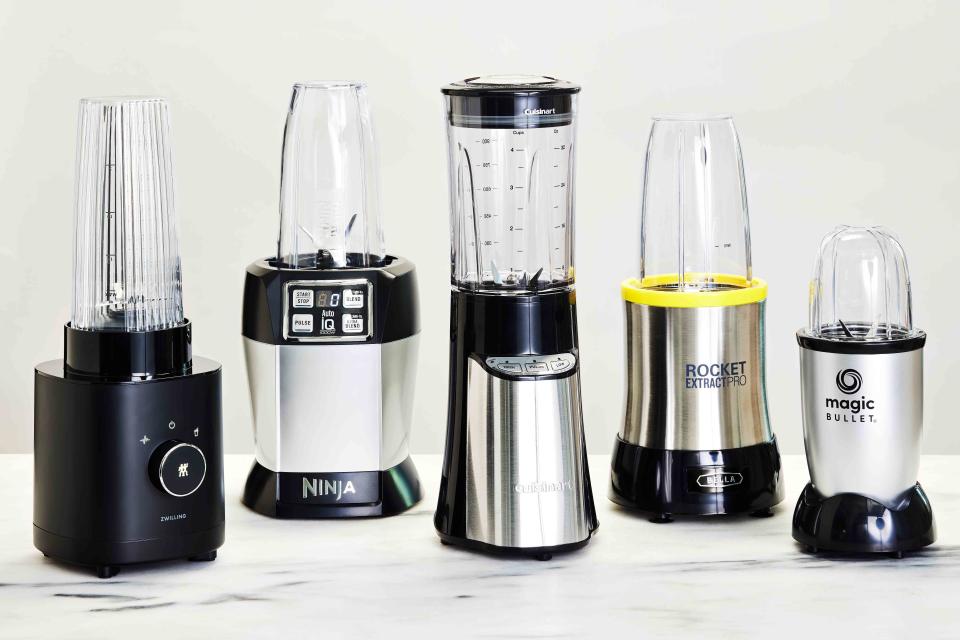
Serious Eats / Russell Kilgore
The Best All-Purpose Blender: Vitamix 5200 Professional-Grade Blender
Our Favorite Personal Blender: Zwilling Enfinigy Personal Blender
Another Great Personal Blender: NutriBullet NB9-1301K Pro
Blenders come in all shapes in sizes, and choosing the right model for your needs can feel a bit like taking a personality quiz. Do you enjoy a post-workout smoothie, or do you see yourself sitting down to a leisurely dinner of creamy, pureed soup? Is your ideal evening sharing a milkshake with a loved one, or whipping up a batch of frozen margaritas for a big dinner party? No matter how you answered, there’s a blender to suit your lifestyle. Blenders typically fall into two categories: personal or full-sized. Though they’re meant to achieve the same goals, there are significant differences in both design and function between these two styles. Here, we break them down, so you can decide which is right for you.
Personal Blenders Offer Petite Portions and Pared Down User Interfaces
Zwilling Enfinigy Personal Blender
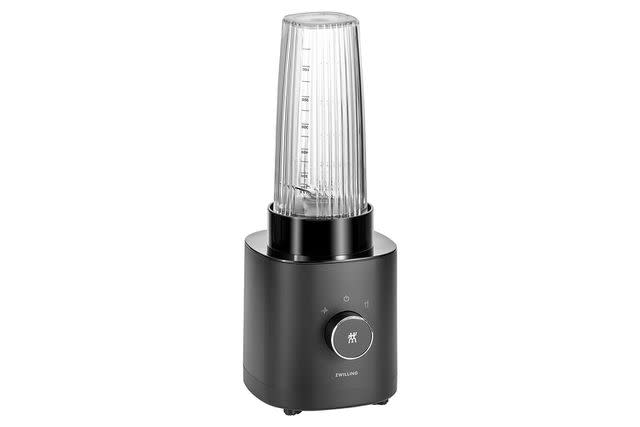
NutriBullet Pro 900

The most obvious difference between personal blenders and full-sized blenders is their capacity. Personal blenders are designed to hold one to two servings, while full-sized blenders double that amount. In our review of personal blenders, our favorite models held between 20 and 32 ounces. These small blenders are well-suited for making individual smoothies, but they’ll cause a major party delay if you’re hoping to serve round after round of piña coladas. In contrast, our favorite full-sized Vitamix model has a stated capacity of 64 ounces—that’s enough space to make frozen drinks for a small crowd.
Personal blenders also have a slightly different design than full-sized blenders. They’re composed of a small jar, an extractor blade that screws directly onto the jar, and a motor base. To use, the jar is filled with ingredients, inverted, and placed onto the base. Personal blenders are designed for ease and efficiency, and generally have fewer settings than full-sized models. Our favorite personal blender from Zwilling had a simple dial with three settings: on/off, pulse, and smoothie.
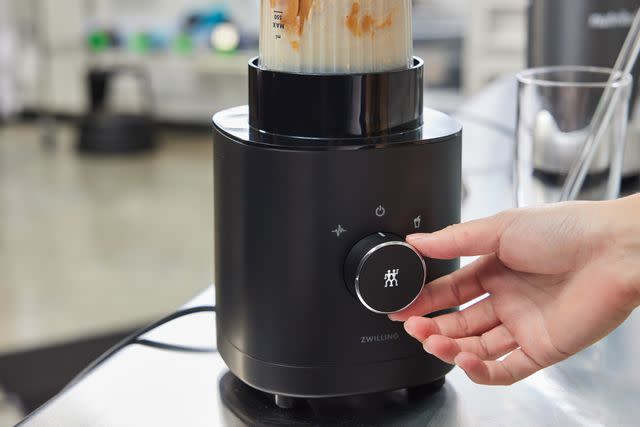
Serious Eats / Russell Kilgore
Read More:The Best Personal Blenders for Smoothies, According to Our Tests
Full-Sized Blenders Allow for Recipe Modifications
Vitamix 5200 Professional-Grade Blender

Once the blade is screwed onto the jar of a personal blender, it’s completely sealed—you can’t add any new ingredients and, if something gets stuck, you won’t be able to reach in with a spatula or wand to give things a stir unless you take it all apart (Note: Serious Eats does not condone reaching into a blender with your fingers under any circumstances).
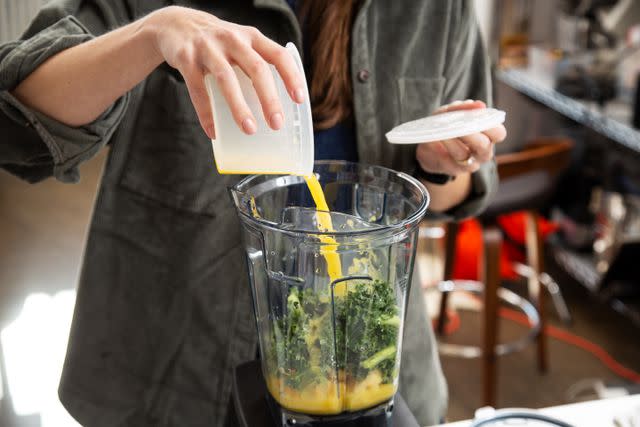
Serious Eats / Tamara Staples
Full-sized blenders offer a little more flexibility. These models include a large pitcher with an attached blade (usually; some models have blades that screw up into the bottom), a lid, and a motorized base.
To use the blender, the pitcher is filled with ingredients, placed on the base, and switched on. Once things are running smoothly, the lid, or lid plug, can be removed to add additional ingredients. This can be helpful in a variety of recipes, but it’s essential if you’re using a blender to make something like homemade mayonnaise, where the oil must be drizzled in slowly to successfully form an emulsion.
Full-Sized Blenders Are Also More Powerful
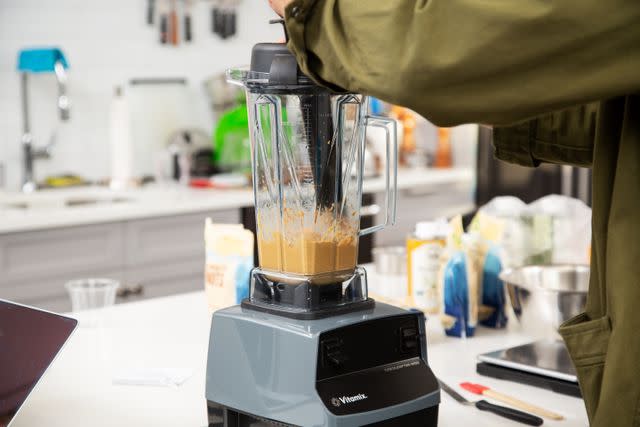
Serious Eats / Tamara Staples
Full-sized blenders—like our favorite the Vitamix 5200 (which has a 1380-watt motor)—are more powerful than their petite personal counterparts.
This machine is capable of blending everything from soup to nuts, literally—the motor is strong enough to churn whole nuts into creamy nut butter. In contrast, the Zwilling Enfinigy Personal Blender has a stated power of 500 watts (less than half the power of the Vitamix). Personal blenders generate enough force to puree fresh or frozen fruits, but for tough jobs like making nut butter or crushing ice, a full-sized blender delivers more consistent (and smooth) results. When reviewing personal blenders, we found that many models included a warning against crushing ice and only the Ninja BN401 Nutri Pro Compact Personal Blender was able to deliver a satisfying slush. Crushing ice is key to creating a variety of icy cocktails and drinks, and a standard blender is well-equipped to churn them out.
Storage and Cleanup Differences
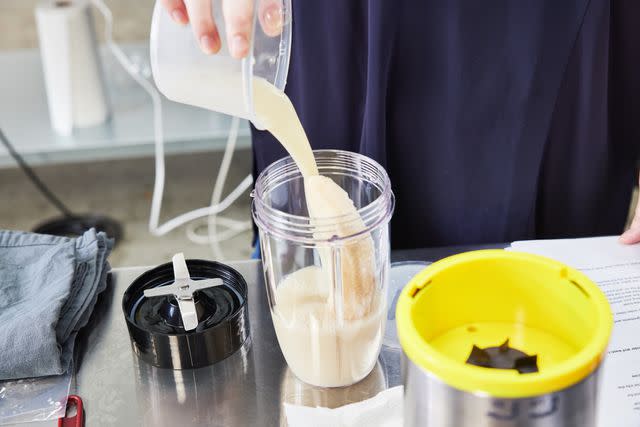
Serious Eats / Russell Kilgore
Personal blenders are small and light—this is a big advantage when it comes to storage. Not only do they take up less space in a cabinet, they’re also easier to get off a shelf. The Vitamix 5200 weighs a whopping 10 pounds, 9 ounces—about the size of a healthy newborn. The effort of hauling a heavy blender out of a cabinet may be enough to deter your spontaneous impulse to make a milkshake, so it’s often easier to store full-sized models on the countertop. Doing so, however, requires significant space. The Vitamix is just over 20 inches tall, and may not fit under low cabinets. If clearance is a concern, the base and pitcher can be stored separately—keeping the base on the counter and the pitcher in a cabinet will eliminate the need for heavy lifting. Shorter, wider models like the E310 Explorian, are also available.
Blenders make many kitchen tasks easier, but let’s face it: they can be hard to clean. Viscous treats like thick milkshakes coat the sides of the jar or pitcher, and tough pieces of produce tend to get stuck around the blade. The construction of personal blenders makes cleanup fast and simple—most models include dishwasher-safe jars and lids, and it’s easy to remove the blade component to wash it under running water. The jar can also double as a serving vessel, giving you the option to cut down on dishes. Full-sized blenders require a bit more effort—it can be difficult to reach the very bottom of a tall pitcher with a spatula to remove debris. The best way to clean a full-sized blender is to rinse it, fill it with warm soapy water, and run the blender on high until clean.
So, Which Should I Buy?
Blender Type | Pros | Cons |
Full-Sized Blender | -Very powerful | -Larger and often more difficult to store |
Personal Blender | -Small and easy to store | -Smaller capacity (20-32 ounces) |
It’s time to evaluate your quiz results. If you just use a blender to make daily smoothies, a personal blender is a great choice. These small machines are compact and easy to clean. Their simplified construction makes for quick to set up, use, and break down, and gets a smoothie into your hands quickly.
Standard blenders are the answer if you’re looking for power and versatility. Although they’re larger and bulkier, full-sized blenders are well-suited to a variety of tasks including (and beyond) smoothie making. If you like to cook and find yourself whipping up mayonnaise, nut butter, or even dehydrating vegetable scraps and pulverizing them to make flavored powders, a powerful standard blender can't be beat.
FAQs
Which is better: a full-sized or a personal blender?
This is a personal choice—only you can determine the best blender for your home. For making multiple servings of a blended drink or pureeing soups, a full-sized blender will offer you the most power and versatility. If your priorities are ease and convenience, a personal blender provides a quick solution for single-serving smoothies,
What is the best way to clean a blender?
Our favorite way to clean a full-sized blender is to fill it with warm soapy water and run it on high for 30-60 seconds. This is also the method recommended in the Vitamix owner’s manual. Personal blenders are a bit easier—most models include dishwasher-safe jars and lids, and the blade component can be detached and rinsed in the sink.
Can a personal blender crush ice?
Generally speaking, personal blenders are not the best tool for crushing ice. While reviewing personal blenders, we found that several models specifically stated that they are not intended for this purpose. The Ninja BN401 Nutri Pro Compact Personal Blender is a notable exception—this model even features a specific crush setting.
What is a standard blender size?
Standard blenders come in a variety of sizes. Our favorite full-sized models have stated capacities ranging from 36 to 64 ounces. When the pitcher is placed on the base, they measure between 11 and 18 inches tall.
Read More:Which Vitamix Blender Should You Buy? We Compared (Almost) All of Them

